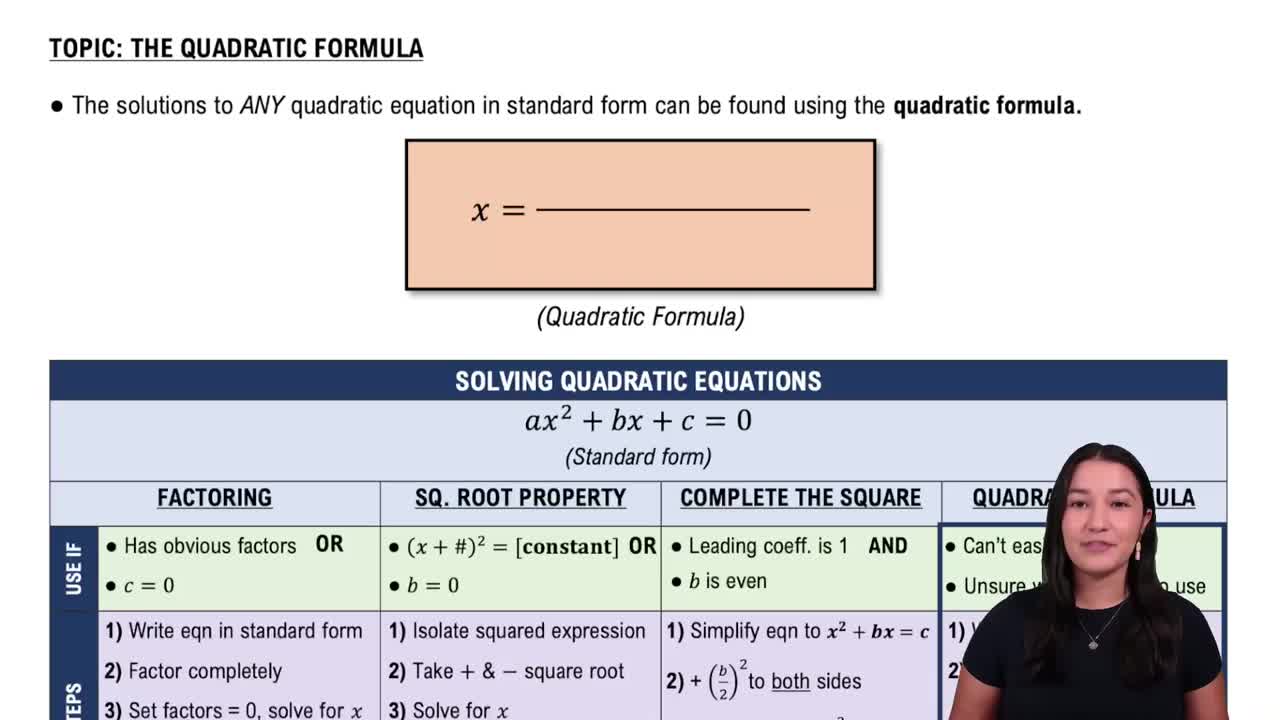Table of contents
- 0. Review of Algebra4h 16m
- 1. Equations & Inequalities3h 18m
- 2. Graphs of Equations43m
- 3. Functions2h 17m
- 4. Polynomial Functions1h 44m
- 5. Rational Functions1h 23m
- 6. Exponential & Logarithmic Functions2h 28m
- 7. Systems of Equations & Matrices4h 6m
- 8. Conic Sections2h 23m
- 9. Sequences, Series, & Induction1h 19m
- 10. Combinatorics & Probability1h 45m
10. Combinatorics & Probability
Factorials
Problem 59
Textbook Question
Textbook QuestionThe factorial of a positive integer n can be computed as a product. n! = 1 * 2 * 3 *. . . * n
Calculators and computers can evaluate factorials very quickly. Before the days of modern technology, mathematicians developed Stirling’s formula for approximating large factorials. The formula involves the irrational numbers p and e.
n! = √2πn * n^n * e^−n
As an example, the exact value of 5! is 120, and Stirling’s formula gives the approximation as 118.019168 with a graphing calculator. This is “off” by less than 2, an error of only 1.65%. Work Exercises 59–62 in order. Use a calculator to find the exact value of 10! and its approximation, using Stirling’s
formula.
 Verified Solution
Verified SolutionThis video solution was recommended by our tutors as helpful for the problem above
Video duration:
3mPlay a video:
Was this helpful?
Key Concepts
Here are the essential concepts you must grasp in order to answer the question correctly.
Factorial
The factorial of a positive integer n, denoted as n!, is the product of all positive integers from 1 to n. It is defined as n! = 1 × 2 × 3 × ... × n. Factorials are fundamental in combinatorics, probability, and various mathematical calculations, particularly in determining permutations and combinations.
Recommended video:

Factorials
Stirling's Formula
Stirling's formula provides an approximation for large factorials, expressed as n! ≈ √(2πn) * (n/e)^n. This formula is particularly useful when calculating the factorial of large numbers, as it simplifies the computation while maintaining a high degree of accuracy. It highlights the relationship between factorials and exponential functions.
Recommended video:

Solving Quadratic Equations Using The Quadratic Formula
Error Analysis
Error analysis in the context of approximations involves assessing the difference between the exact value and the estimated value provided by a formula like Stirling's. In the example given, the error is calculated as the absolute difference between 5! (120) and its approximation (118.019168), which is about 1.65%. Understanding error is crucial for evaluating the reliability of approximations in mathematical computations.
Recommended video:

Finding the Domain of an Equation
Related Videos
Related Practice


